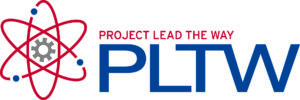This post is written by Project Lead The Way, a Platinum Level sponsor of the 2019 Advance CTE Spring Meeting.
CTE provides vital resources for all students, particularly those who may otherwise not see STEM career opportunities.
“Students can’t be what they can’t see.”
 This has become a mantra at Project Lead The Way (PLTW). While this statement applies to all students, many female, minority, or economically disadvantaged students may find it particularly difficult to see a variety of college or career options for themselves – especially in STEM fields. Yet STEM jobs continue to be the most in demand and highest paying.
This has become a mantra at Project Lead The Way (PLTW). While this statement applies to all students, many female, minority, or economically disadvantaged students may find it particularly difficult to see a variety of college or career options for themselves – especially in STEM fields. Yet STEM jobs continue to be the most in demand and highest paying.
According to the U.S. Department of Commerce’s STEM Jobs: 2017 Update, STEM employment growth far exceeds growth in non-STEM occupations, and experts project that trend will continue. Career and Technical Education (CTE), including PLTW programs, give students opportunities to explore interests that can lead to lucrative and rewarding career paths.
PLTW’s PreK-12 pathways in computer science, engineering, and biomedical science empower students to develop in-demand skills needed to pursue rewarding careers, solve important challenges, and contribute to global progress. Providing students with these hands-on, real-world applied learning experiences is critical. In the 2017 report “STEM Occupations: Past, Present, and Future,” the U.S. Bureau of Labor Statistics reported that STEM occupations experience above-average growth and that 93 out of 100 STEM occupations have wages “significantly above the national average wage for all occupations.”
In order to break down barriers that may keep students from “seeing” career opportunities, PLTW works to increase diversity and equity in CTE. How can CTE programs across the country expand access to all students?
Create Opportunities for Early Access to Career Learning
Access to engaging, high-quality, relevant, confidence-building STEM experiences is vital for all students – especially girls – and the earlier, the better. Research published in the journal “Child Development” shows that children express the stereotype that mathematics is for boys, not for girls, as early as second grade. Additionally, 65 percent of scientists and graduate students interviewed in one study published in the “International Journal of Science” reported that their interest in science began before middle school.
Since 2014, PLTW has expanded career learning well before middle school with the addition of PLTW Launch for PreK-5. PLTW Launch empowers students to adopt a design-thinking mindset through compelling activities, projects, and problems that build upon each other and relate to the world around them. Students engage in hands-on activities in computer science, engineering, and biomedical science. Initially developed for K-5, PLTW added PreK in 2018 to engage learners as they first begin entering the school setting.
Leverage Partnerships and Community Resources to Expand Reach
PLTW is committed to engaging more students – including those from underrepresented backgrounds – in STEM, and research supports PLTW’s effectiveness in this area. A national demographic analysis of PLTW students finds that PLTW programs are distributed across the entire economic spectrum, and many schools with high minority and socioeconomically disadvantaged student populations have implemented PLTW with success.
The Toppenish School District, for instance, is a PLTW district in rural Washington. Ninety-five percent of its student population is Hispanic and Native American, and 100 percent of students qualify for free or reduced-price lunch. In 2010, Toppenish High School implemented PLTW. Today, all students take at least one PLTW course, and female/male enrollment in the second year of PLTW courses is nearly equal. High-level math and science class enrollment has skyrocketed, and remedial class enrollment has dropped. The district now offers PLTW in all of its schools, and the graduation rate is 97.5 percent, compared to 90.4 percent five years prior.
PLTW leverages philanthropic partnerships to expand program access through grants, providing underserved students with access to high-quality STEM learning. For example, PLTW and Verizon have partnered since 2014 to provide computer science curriculum in schools with an average free or reduced-price lunch eligible population of 85 percent, benefiting students in 36 states across the U.S. PLTW also partners with organizations committed to increasing diversity in STEM, such as the National Alliance for Partnerships in Equity (NAPE), the National Center for Women and Information Technology (NCWIT), and the National Action Council for Minorities in Engineering (NACME).
Provide Mentoring and Career Shadowing Opportunities to Open Students’ Eyes
PLTW alumna Markie Wagner shared in a recent episode of InspirED, a podcast from PLTW, that career experiences and mentoring opportunities play a critical role in inspiring students to pursue STEM interests, especially for girls and underserved communities. We all have a part to play in opening students’ eyes in order to open doors to endless possibilities, ensuring a better equipped and diverse workforce for the future.
Project Lead The Way (PLTW) is a nonprofit organization that provides a transformative learning experience for PreK-12 students and teachers across the U.S. PLTW empowers students to develop in-demand, transportable knowledge and skills through pathways in computer science, engineering, and biomedical science. PLTW’s teacher training and resources support teachers as they engage their students in real-world learning. Schools in all 50 states and the District of Columbia offer PLTW programs. For more information on PLTW, visit pltw.org.

